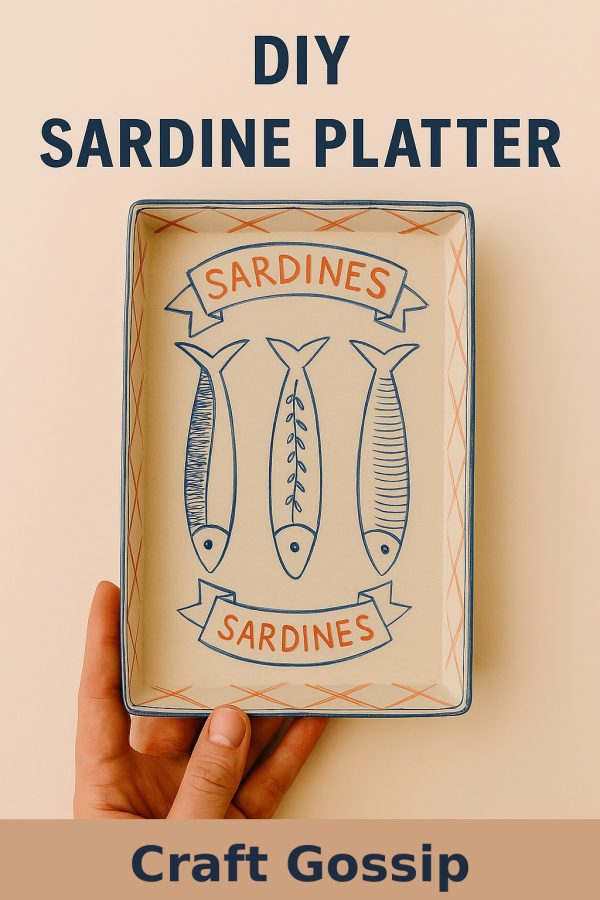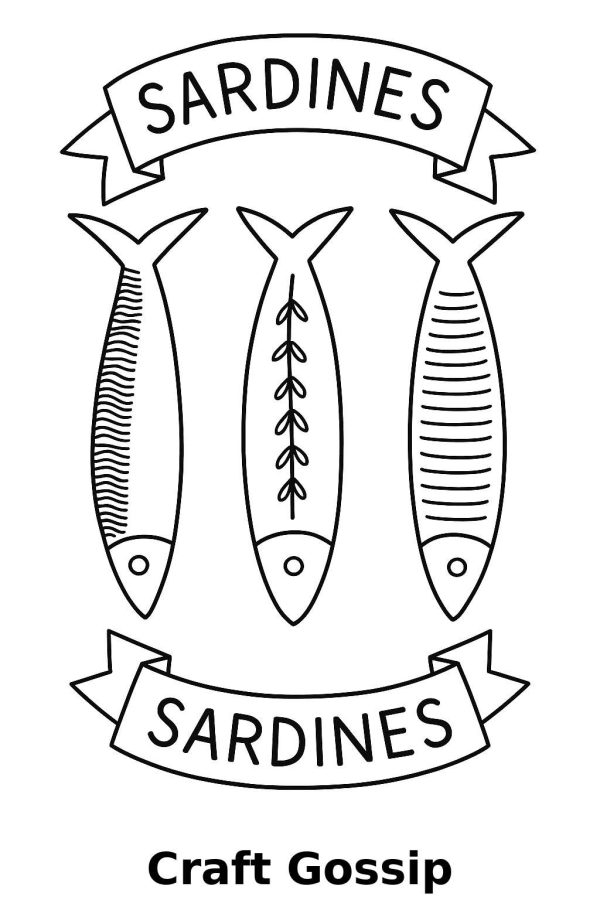
Every good hostess knows a serving platter is the secret weapon at a party. It corrals snacks, makes everything look intentional, and saves you from running back and forth with little bowls. This DIY divided platter takes that idea one step further: each section is labeled with hand-drawn illustrations, making it both useful and irresistibly charming.
The original inspiration came from these tapas-style platters, but we’re creating an English version featuring everyday snacks and nibbles. It’s fun, it’s functional, and it makes even store-bought crackers look Pinterest-worthy.
Materials You’ll Need
- White ceramic clay (or air-dry clay if you don’t have access to a kiln)
- Rolling pin or slab roller
- Oval platter base template (downloadable below)
- Divider templates (downloadable below)
- Scoring tool + slip for joining clay
- Sponge and rib tool for smoothing
- Cobalt blue underglaze pencil OR blue underglaze with a fine brush
- Kiln + clear glaze (for ceramic clay) OR a food-safe sealant (for air-dry clay)
Step-by-Step Tutorial
Step 1: Shape the Base
Roll a slab of clay about ½ inch thick. Place the oval platter template on top and cut out your base. Smooth edges with a damp sponge.
Step 2: Add Dividers
Use the divider templates to cut strips of clay. Attach them to the base by scoring and slipping. Smooth joins and curve the edges slightly for a handmade look.
Step 3: Refine
Let the platter dry until it’s leather-hard. At this stage, you can tidy the walls, soften corners, and make sure the surface is smooth.
Step 4: Draw Your Illustrations
Here’s where the personality shines. Using an underglaze pencil or fine brush, sketch quick doodles into each section. Keep them loose and playful, not perfect. Our platter has:
- Cheese – wedges with holey details
- Ham – loose stack of wavy slices
- Anchovies – three slim fish outlines
- Sardines – larger, striped fish drawings
- Salami – one log plus a few round slices with dotted speckles
- Olives – oval shapes with pits, some sliced open
- Tomatoes – little cluster of round tomatoes tied together
Note: Drawings are slightly altered from the original for a fresh, unique design.
Step 5: Fire and Finish
- For ceramic clay: bisque fire, add clear glaze, and glaze fire.
- For air-dry clay: allow to dry fully, then paint with a clear food-safe sealant if you’ll use it for food. Otherwise, it makes a perfect decorative tray.




Leave a Reply